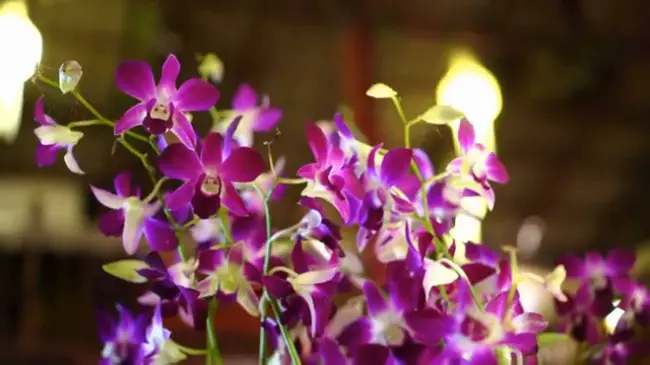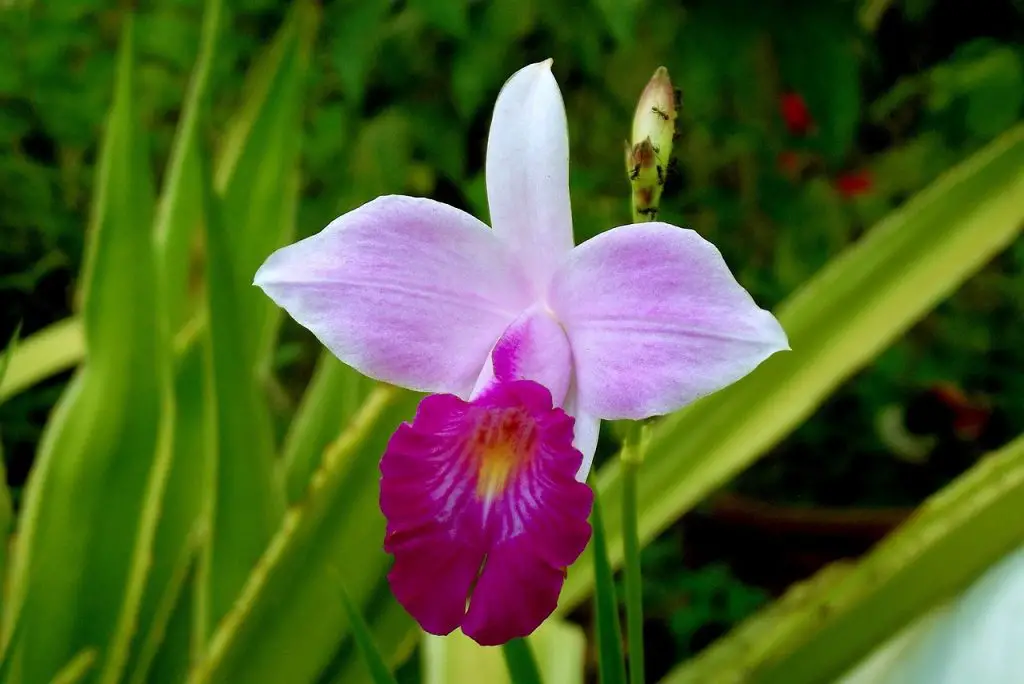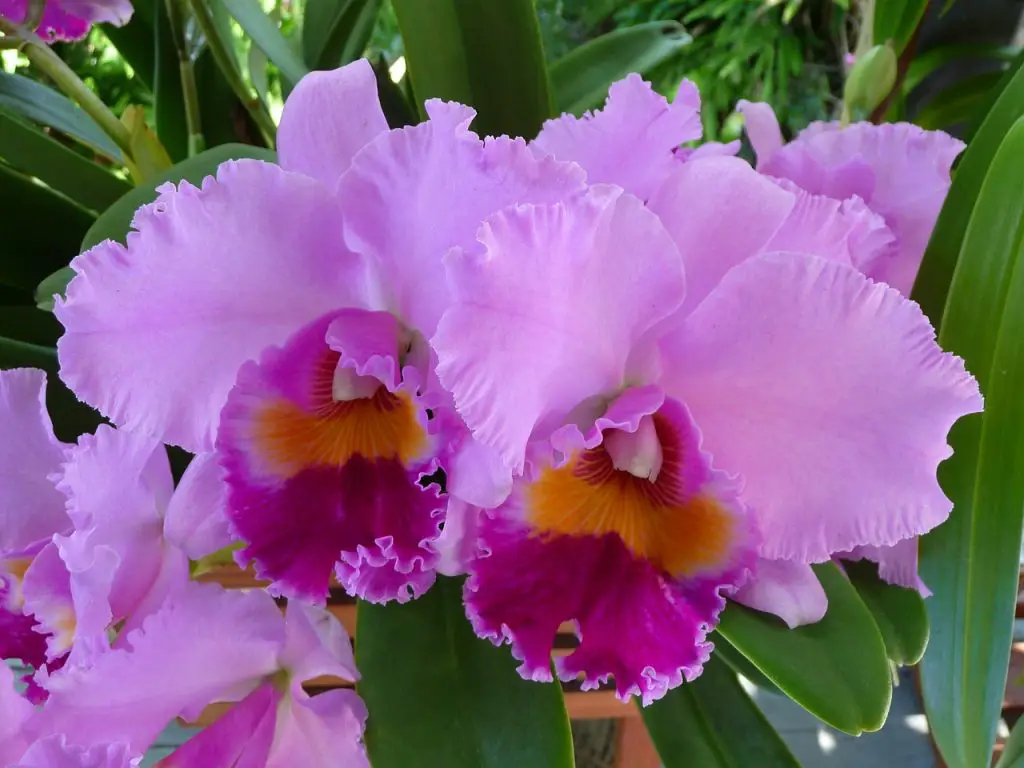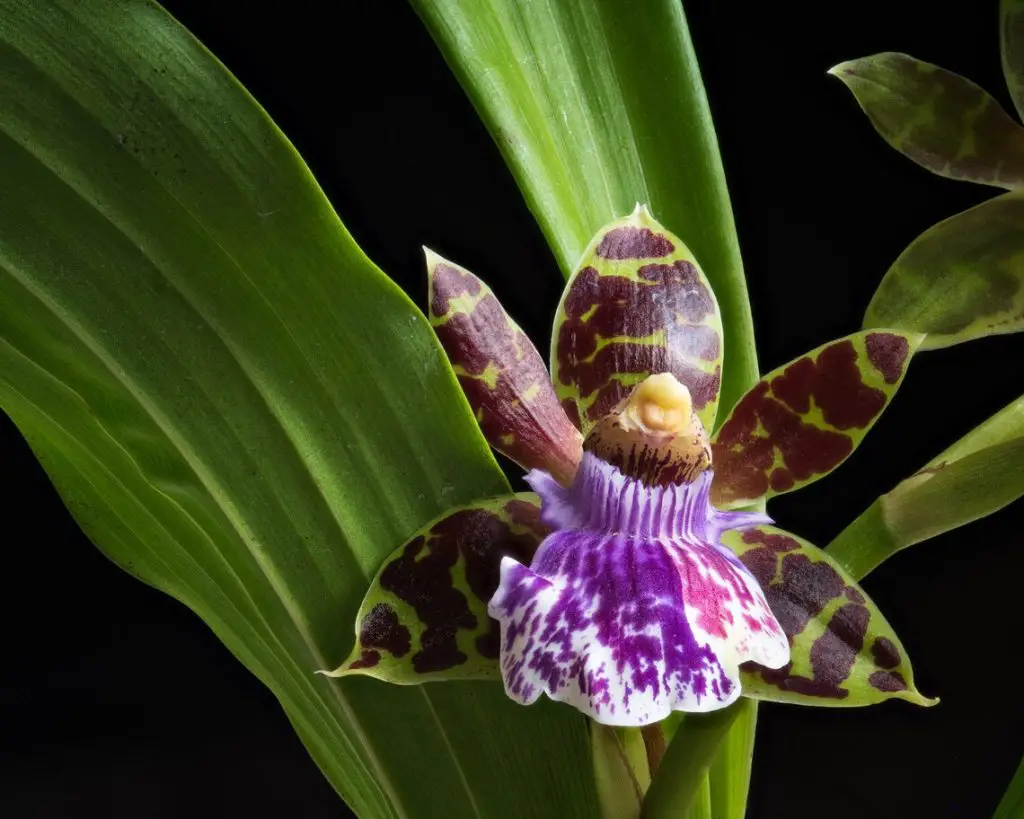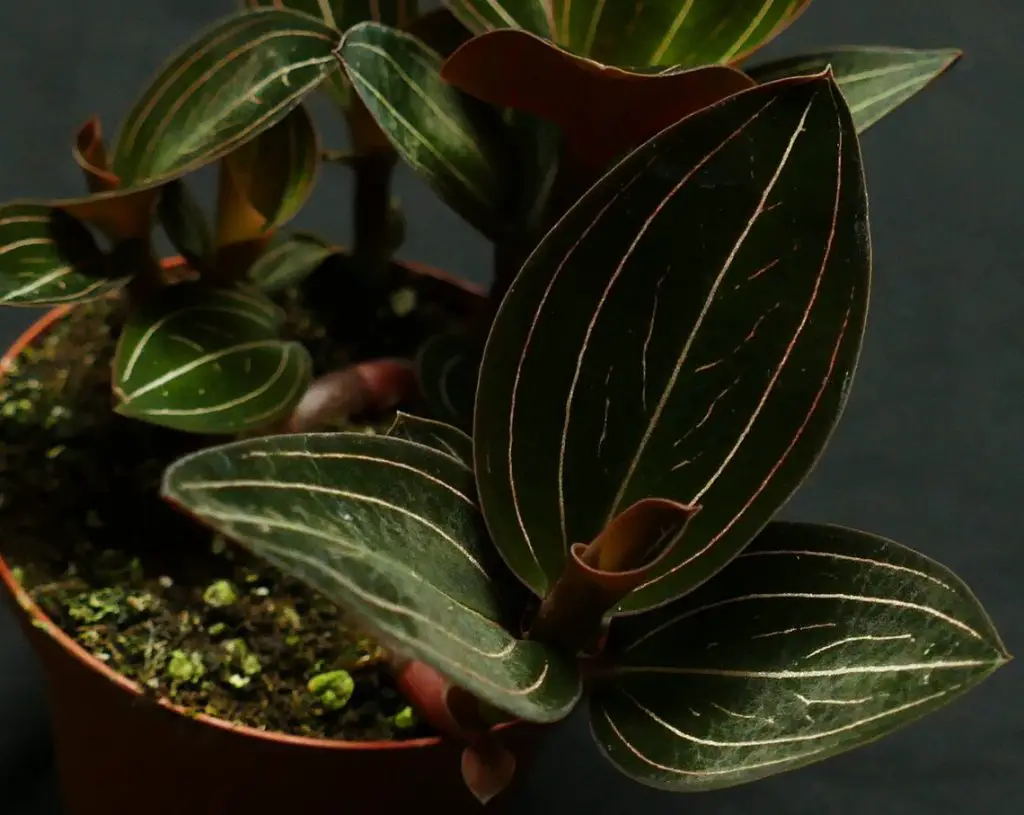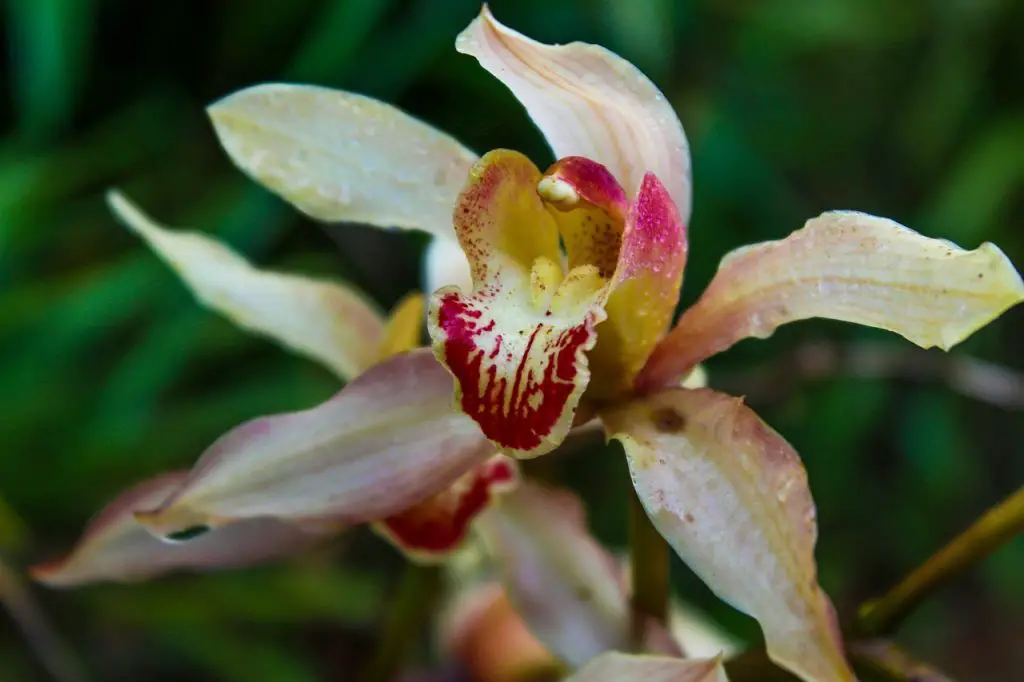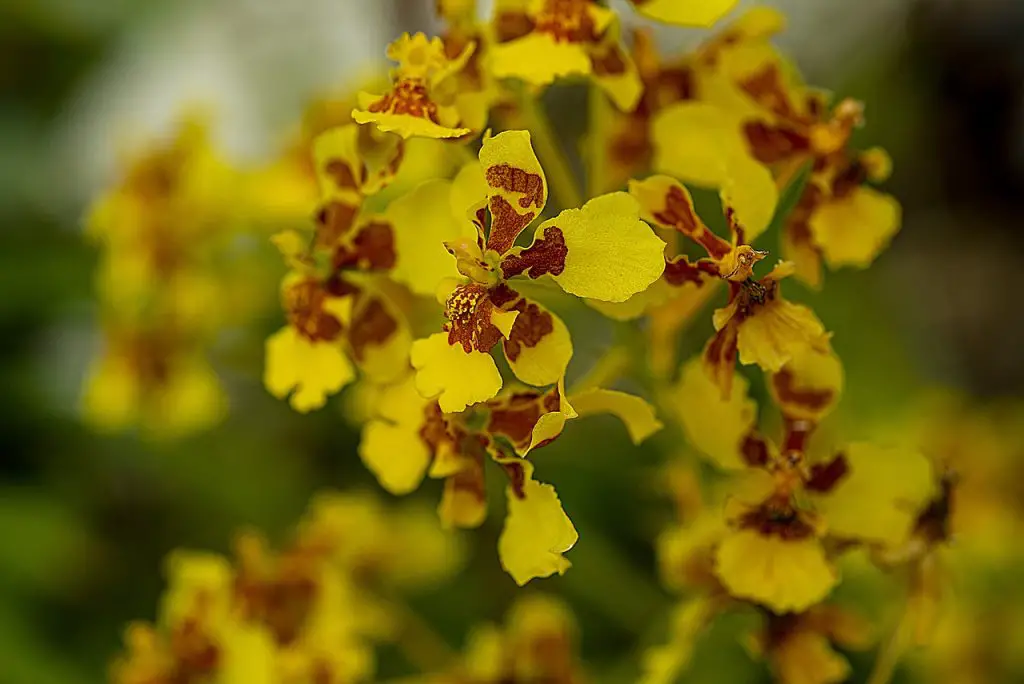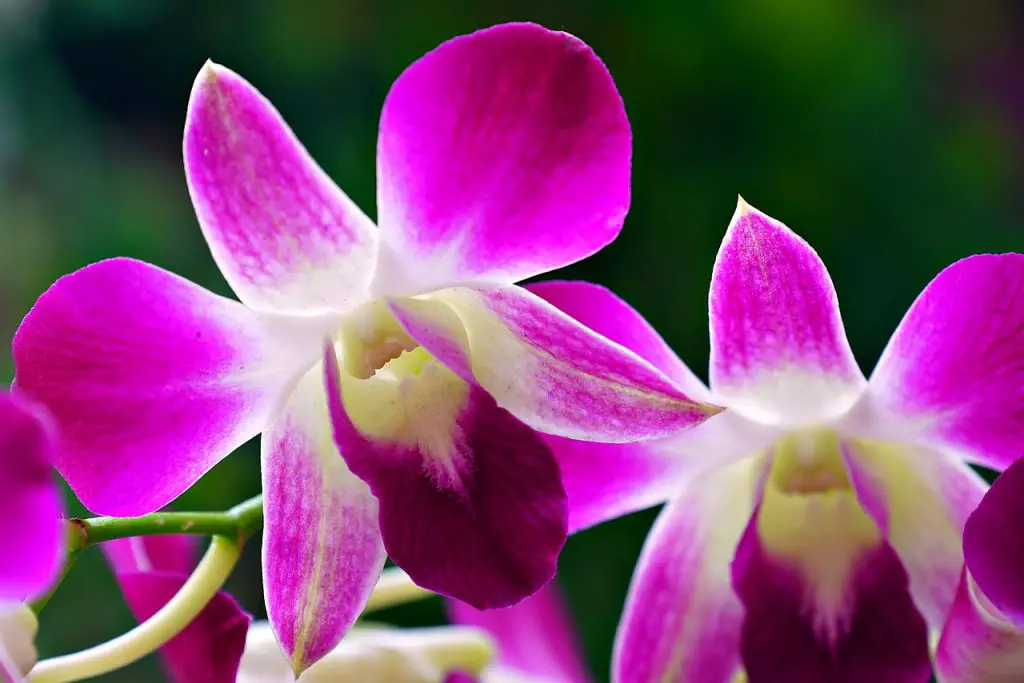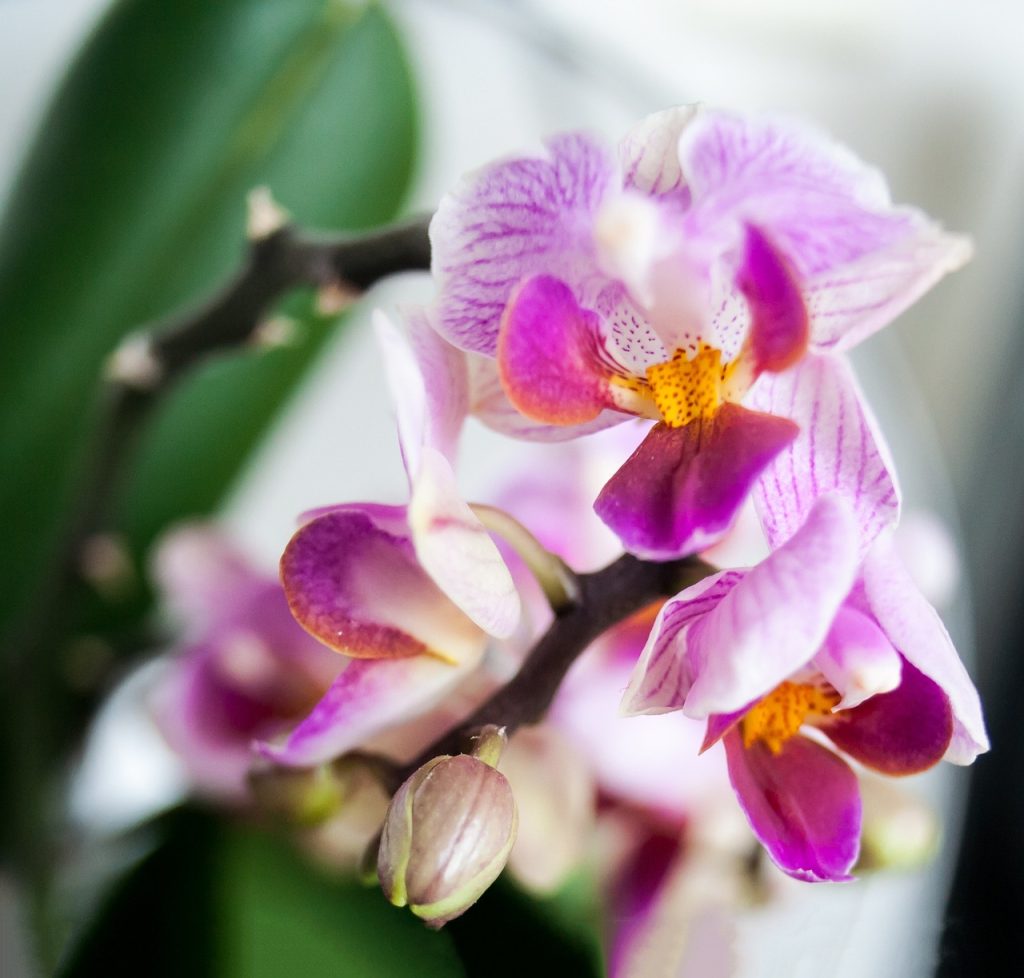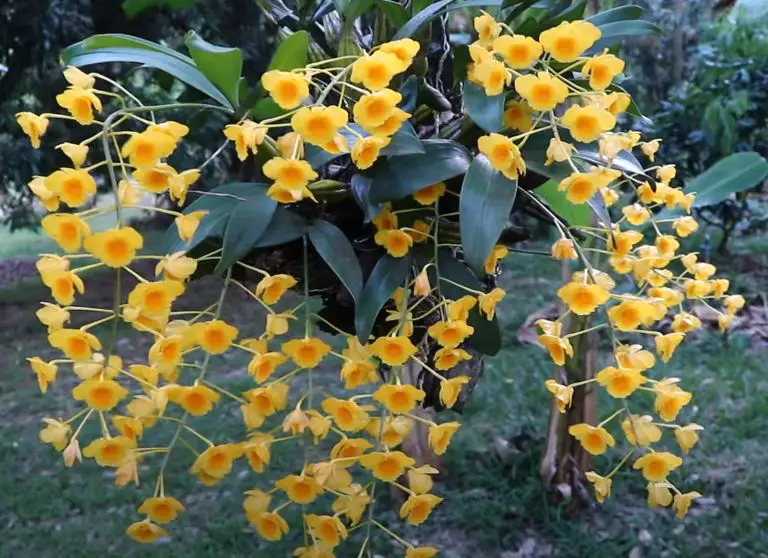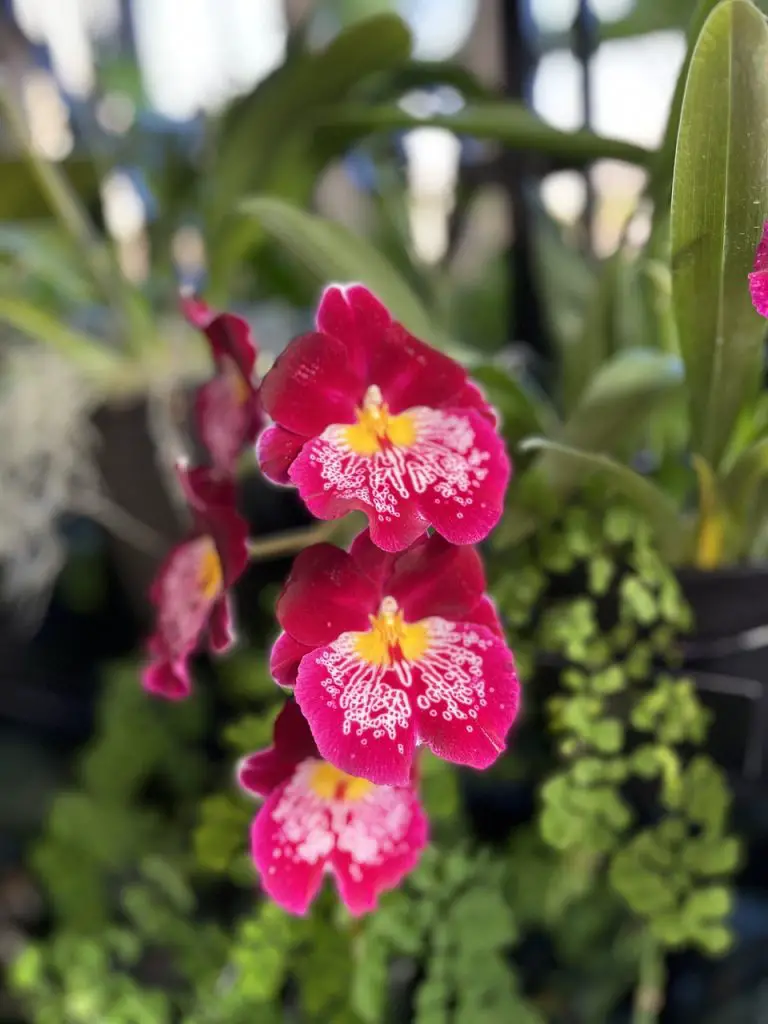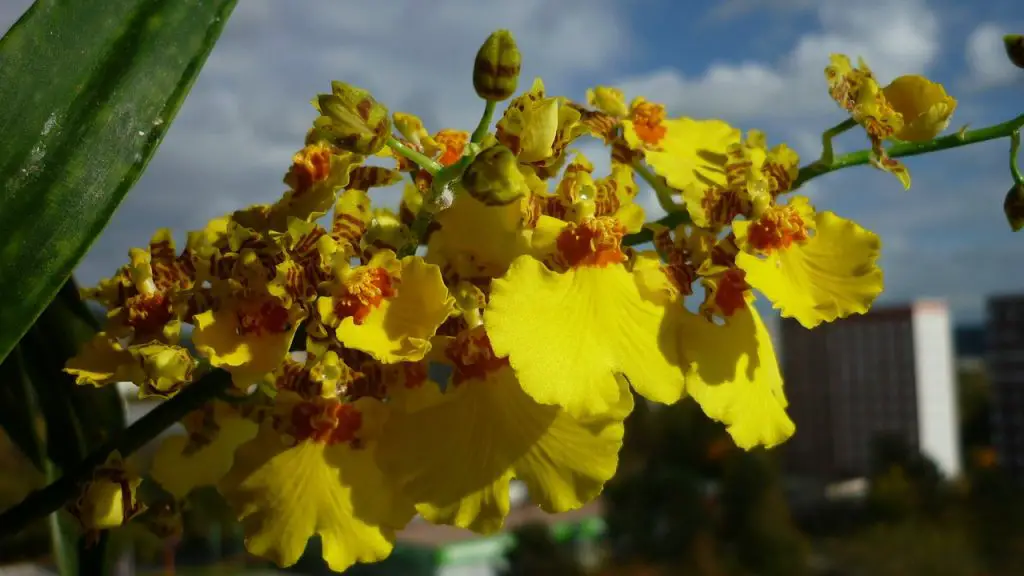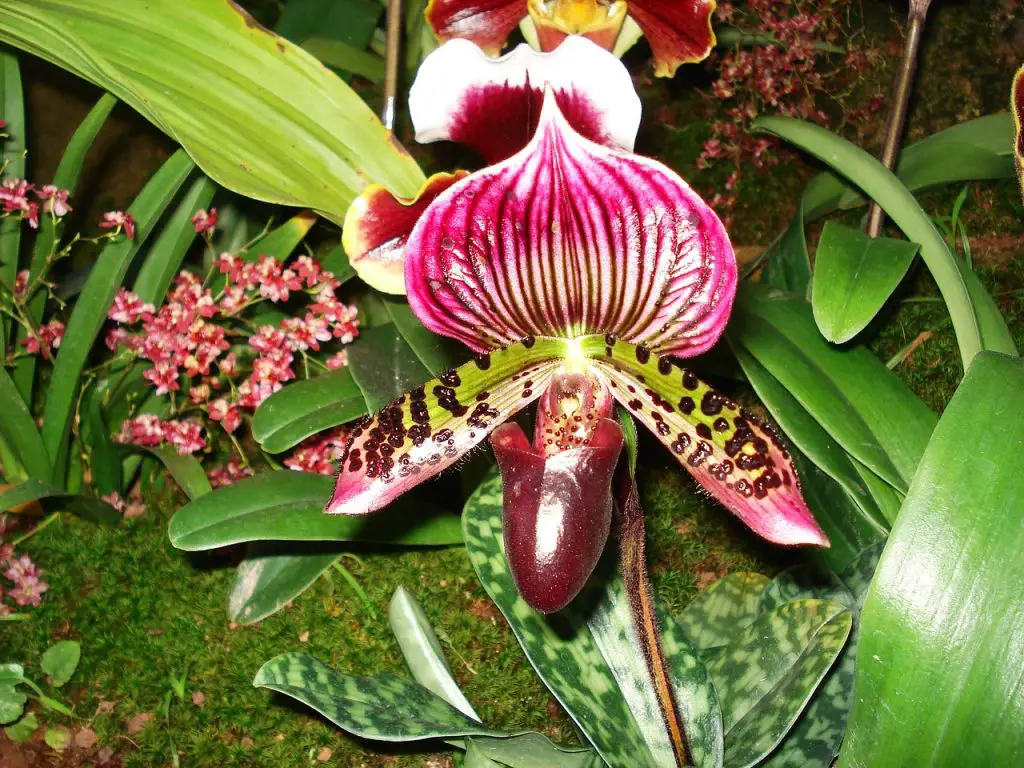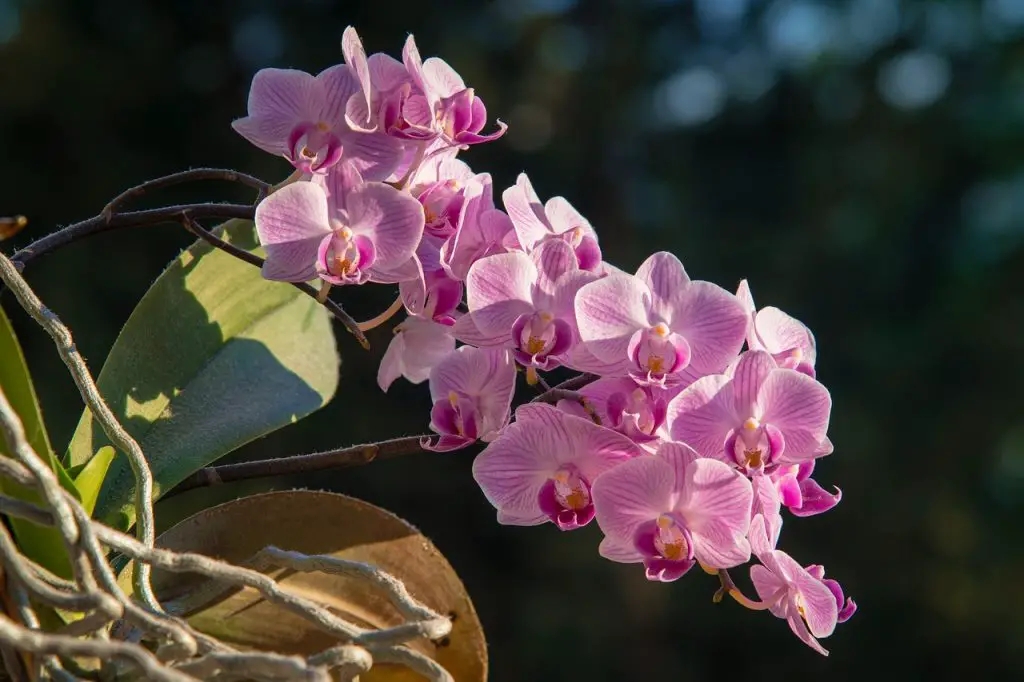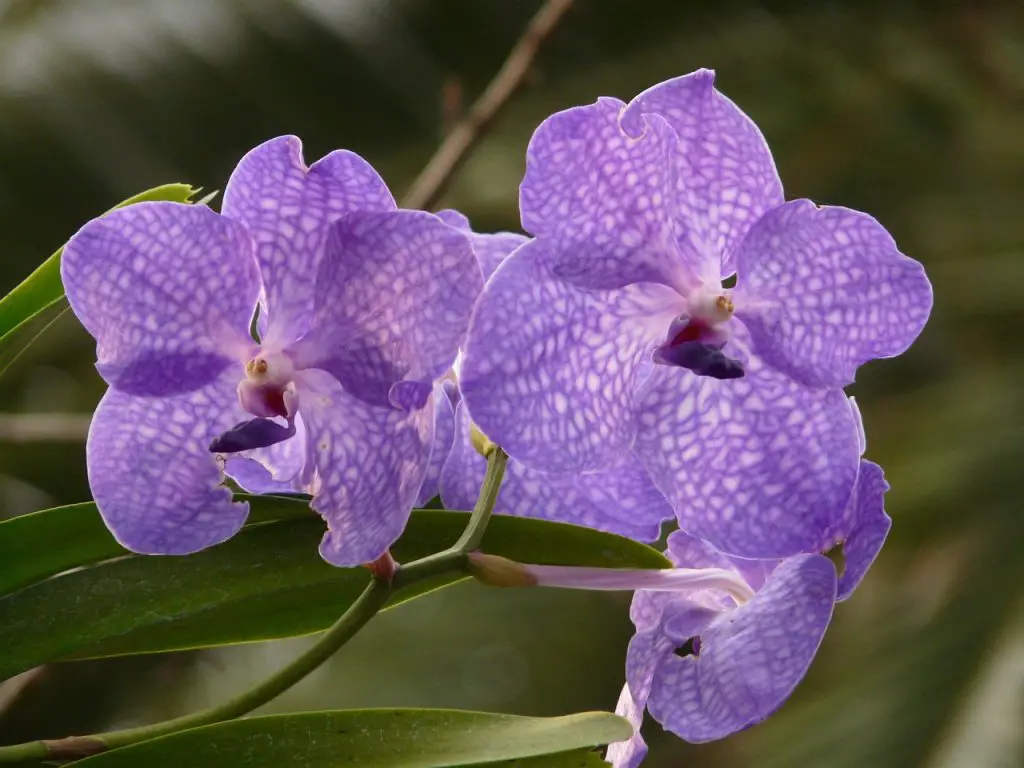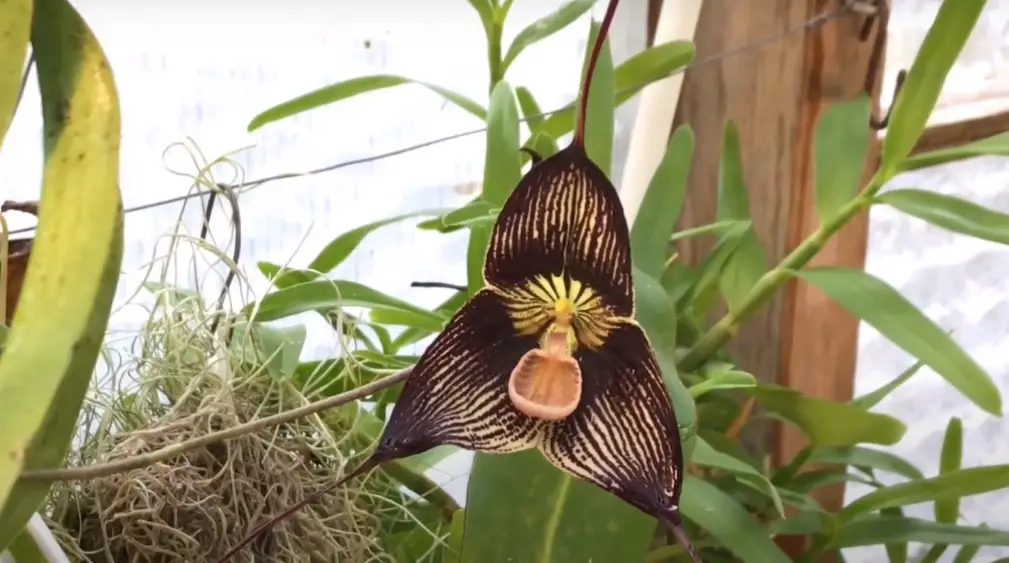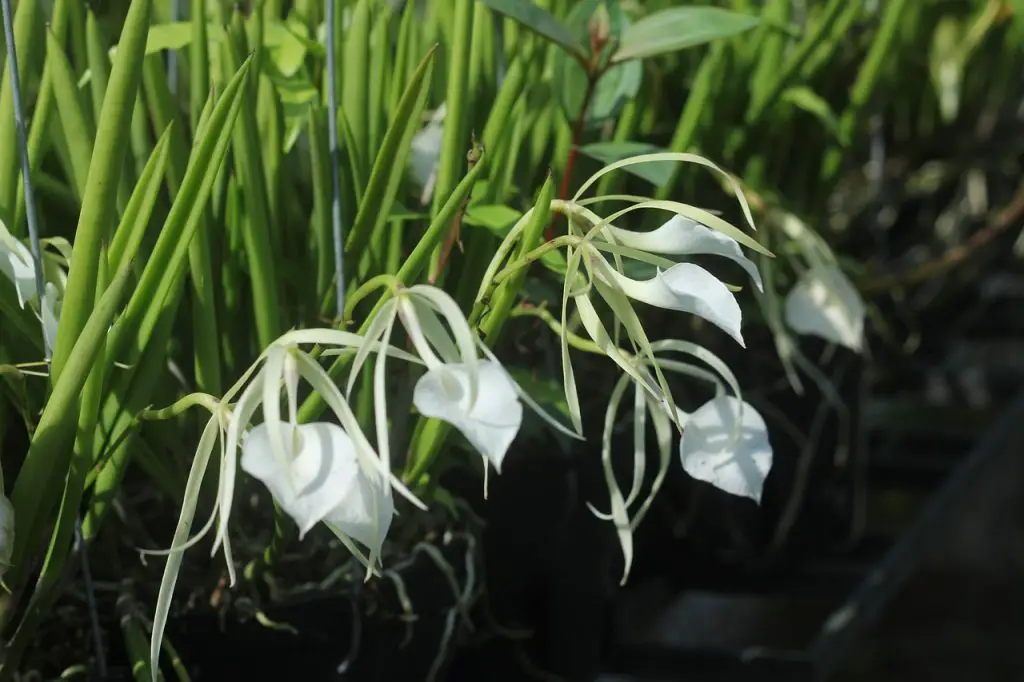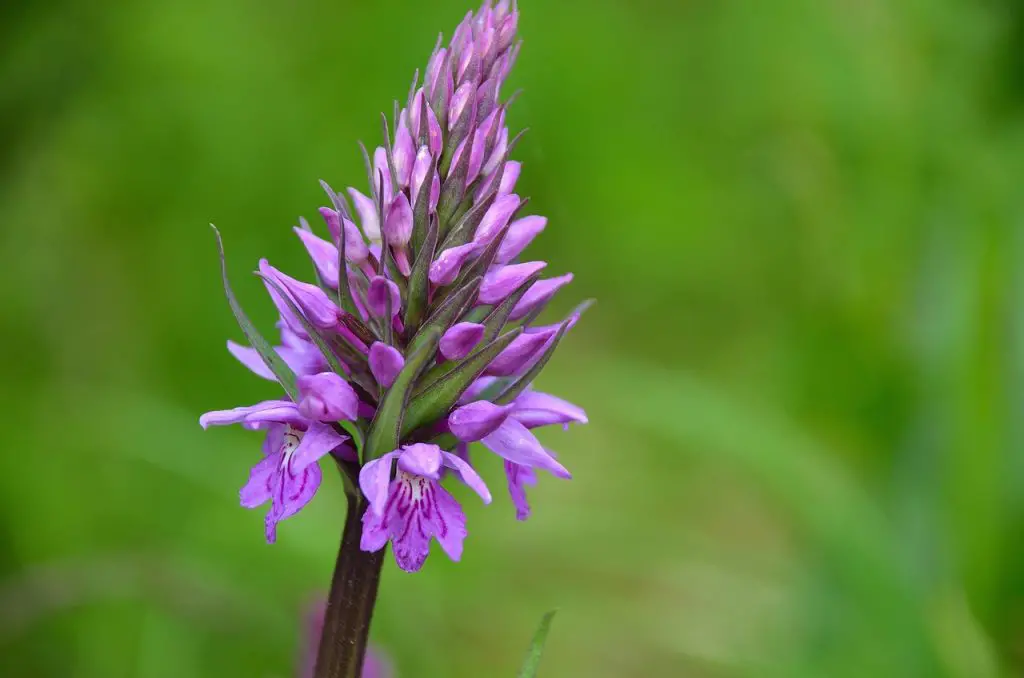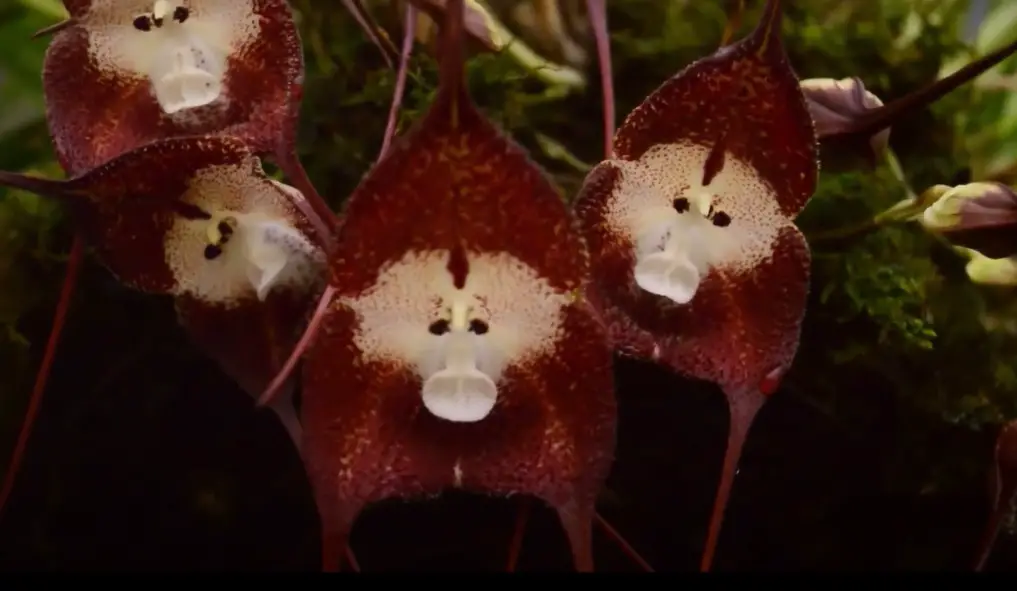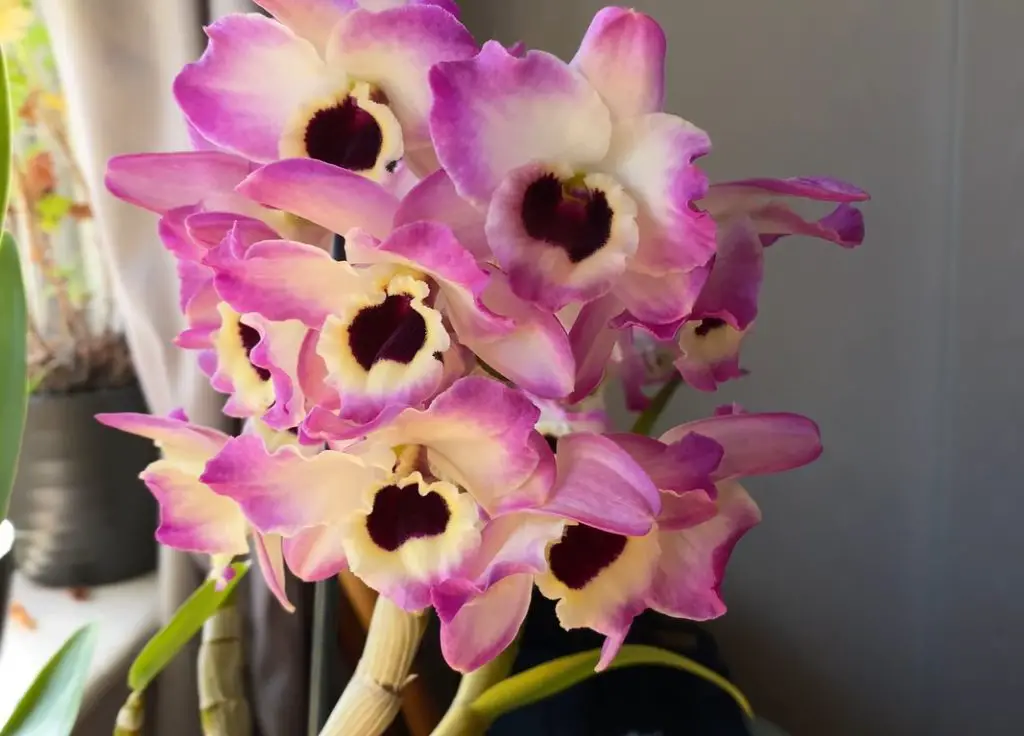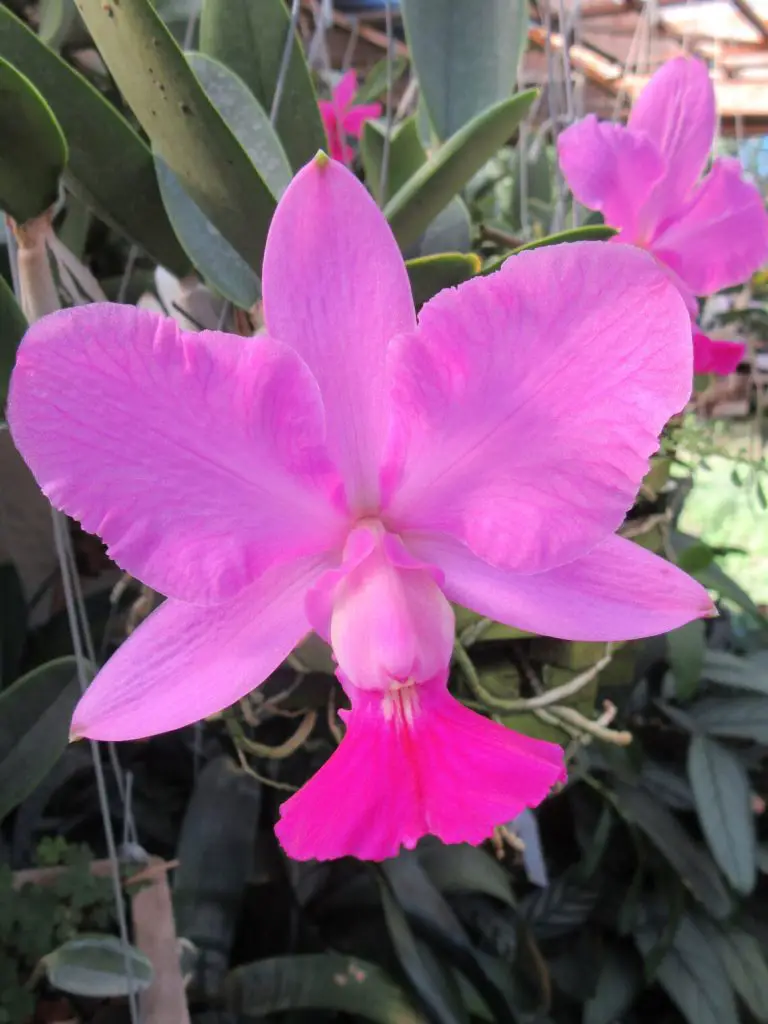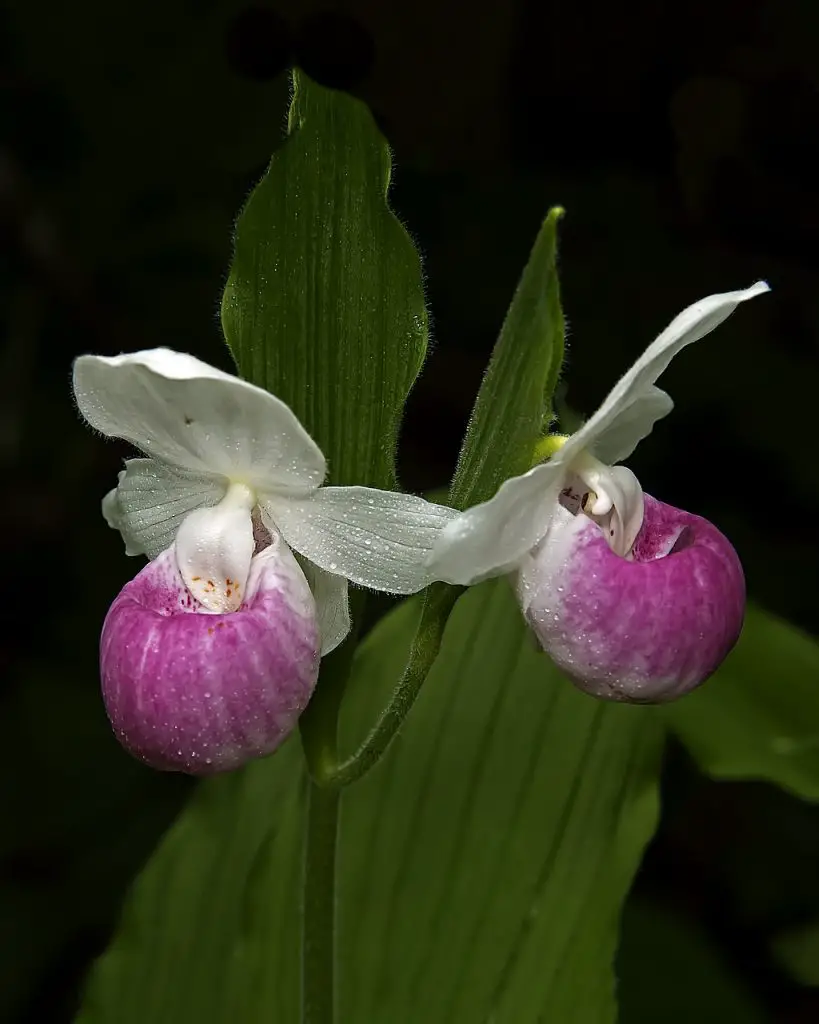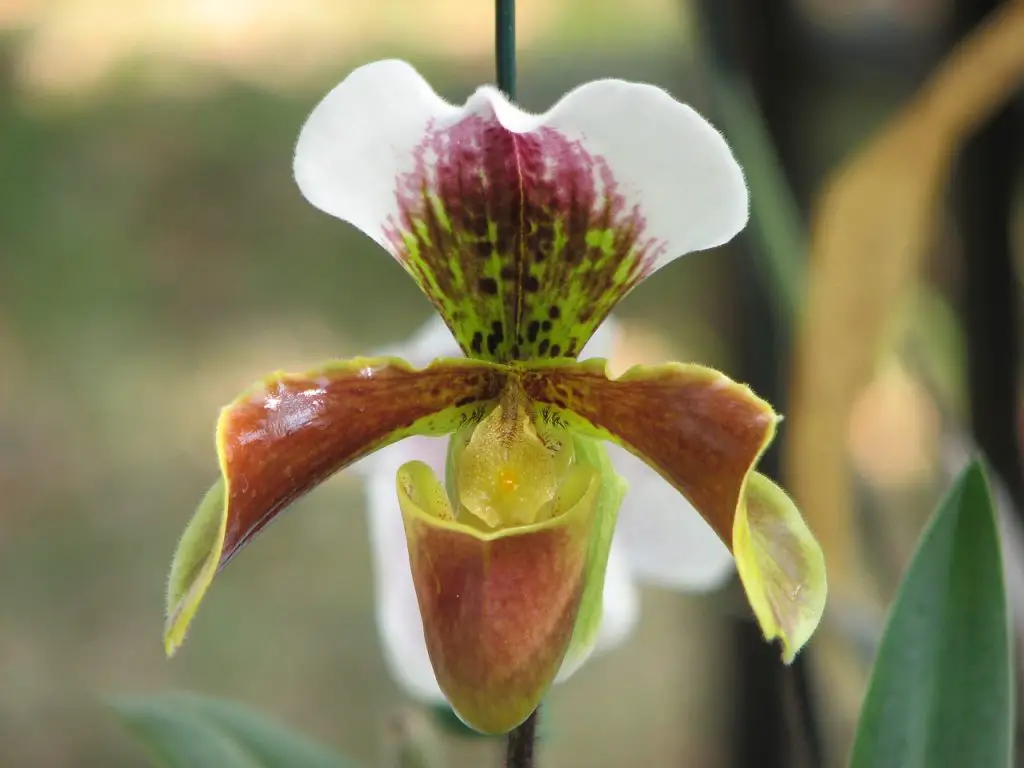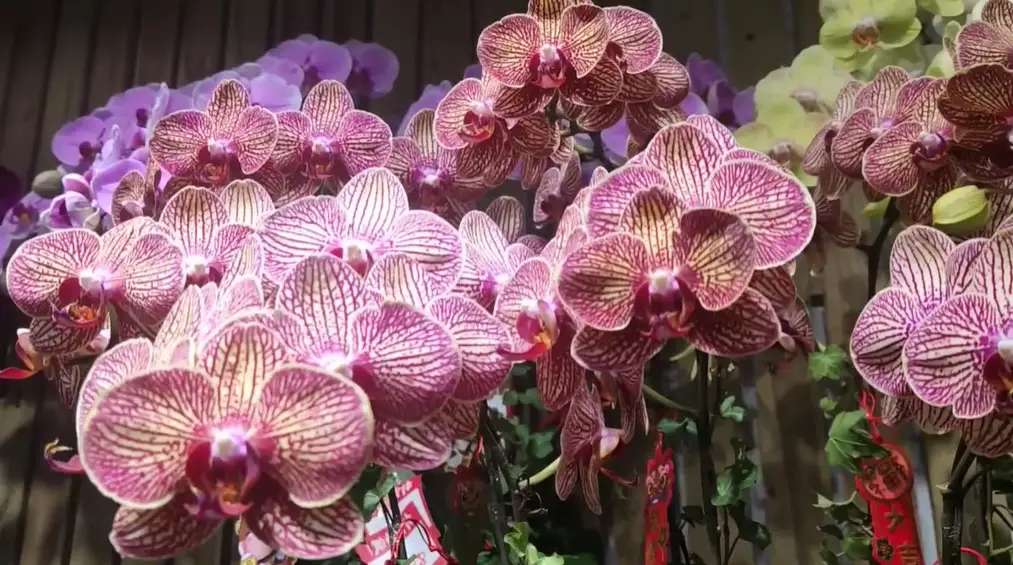Orchids are charming and beautiful flowers. They can be used on any occasion, especially during special events such as weddings. Orchids are lovely ornaments in the bride’s bouquet.
These exotic plants have actually over 25,000 species and more than 100,000 hybrids. However, there are only two types of orchids. Orchids are also the largest family of flowers on the entire planet. A variety of shapes, colors, and sizes make these distinctive flowers all the more attractive.
Generally, there are two types of orchids, and you can categorize them into terrestrial orchids and epiphytes.
Terrestrial Orchids
Terrestrial orchids grow in the soil, and there are approximately 200 species of this type. Subcategorically, there are two general groups of terrestrial orchids: individual and clumps or tuft growers.
Individual growers are also known as solitary, which, again, has two groups. The first group grows flowers and leaves from a common stem, while the other group of solitary-growing terrestrial orchids grows flowers and leaves from a different stem.
Know more about Terrestrial Orchids by referring to this video:
Epiphytes
These are the second orchids type where the plants are attached to another plant or object for physical support. They do not take nutrients from the trees, but they gather their own nutrients from falling rain, air, and the compost found on the branches of the trees.
Epiphyte orchids have more access to direct sunlight, and some more animals or insects can help them pollinate. Epiphytes can spread their seeds through winds.
Know more about Epiphytes by referring to this video:
A Beginner Must Know The Types Of Orchids
Growing orchids is a delightful activity for leisure and if you are new to growing these exotic plants, look forward to the many ways you can enjoy them. It is not a particularly difficult endeavor to grow orchids. These resources can give you guidelines and tips on orchid care and gardening. To start your venture in orchid growing, you first have to be aware of the basics, such as the types of orchids.
The orchid family is known as Orchidaceae, which has almost 35,000 genera. Orchidaceae is the second-largest family of flowering plants. Plants in the orchids family have various attractive colors such as blue, yellow, purple, red, pink, and white, and other types of orchids have a combination of two colors. Knowing about different types of orchids will help you choose plants to keep in your garden.
Types of Orchids According To Structure
Knowing the Types Of Orchids includes being informed about the proper ways of growing them and their growth and care requirements. As a beginner orchid enthusiast, take note of the different orchid types and consider your preferences for your garden.
Monopodial orchids are orchid plants having a single stem. This type of orchid grows mainly on its stem and in an upward manner. It develops continually in one direction from the terminal shoot. It has neither rhizomes nor pseudobulbs.
Sympodial orchids are orchids that grow out along the growing medium’s surface and with an often horizontal stem. Many lateral branches emerge just behind the apex of the main stem that ceases to grow.
Types Of Orchids According To Growth Habit
Terrestrial Orchids are orchids that grow in the ground. However, some terrestrial orchid species do not grow in ordinary soil. Instead, they grow best in the humus and leaf litter, like the soils found on forest floors. Terrestrial orchids include Cymbidiums, Spathoglottis, slipper orchids, and the Chinese ground orchids.
Epiphyte Orchids are a type of orchid that grows on another plant above the ground. Mediums, where epiphyte orchids may grow, are trees that support them and expose them to sunlight. Rainwater and air are the primary sources of water and nutrients for epiphytes. Even though these orchid plants grow on another plant, they are not parasites.
Climbing Orchids are epiphyte orchids that grow from the ground and climb up a tree as they grow. They have extensive aerial roots. Vanda is an example of an epiphyte orchid.
Lithophyte orchids, on the other hand, grow on the surface of rocks or stony ground. These are rare types of orchids and are often not grown by beginners.
Know The Types of Orchids And What’s Best For Your Garden
Knowing the different orchid types will help you in choosing the best variety of orchids for growing. You ought to be familiar with the kinds of orchids so you’ll make an informed decision on your purchase. You can then identify the differences and how the two types of orchids are grown properly.
Terrestrial orchids need healthy soil, and the epiphytes need a tree or an object to attach to. If you are planning to grow these two types of orchids in your home, see to it that you provide the needs of your plants for them to grow healthily and bloom splendidly.
How To Grow The Different Types of Orchids
You primarily should provide the needs of the types of orchids you tend to in your home. This is, of course, essential to sustain their growth. Regular watering is vital, but you should also allow the media to dry between watering. If your orchid flowers are in bloom, mist the foliage in between watering.
Then there’s feeding your orchids with fertilizer. A balanced fertilizer is typically given every other watering during the late part of spring. Assess your orchids if they need to be repotted as well. This is important so that your plants can be settled in fresh media and a larger pot for growth support for at least one year.
Another crucial factor is that you have to make use of the correct growing media, too. Note that orchids are not to be planted in ordinary soil. Be aware of these elements of growing orchids to keep them ever fresh and lively, giving your home an exotic charm.
Famous Orchid Species
1. Bamboo Orchid
The Bamboo Orchid, also known as Arundina graminifolia, is a species of orchid native to Southeast Asia. It’s an evergreen perennial that grows in dense clumps and produces sprays of star-shaped flowers throughout the year. Its leaves are linear with pointed tips and its stems can reach up to 3 feet tall.
The most characteristic feature of this plant is its bright yellow-orange blooms which form along the length of its stem. As far as care goes, it requires moist soil and should be fertilized regularly for optimal growth. Furthermore, it prefers partial shade but will tolerate full sun if provided enough water. In short, the bamboo orchid is an excellent choice for those looking for a vibrant addition to their garden.
2. Cattleya Orchids
Continuing the conversation about orchids, let’s now explore Cattleya Orchids. These magnificent plants are a favorite of many flower lovers due to their exotic beauty and remarkable lifespan. Although they may look delicate and fragile, these hardy plants can last up to 15 years with proper care.
Cattleyas can be identified by their long stems and clusters of large flowers that range in color from pale pink to deep purple. They require bright indirect sunlight as well as regular fertilizer applications throughout the year for optimal growth. Most varieties will grow best if placed near an east-facing window where it receives plenty of natural light but is protected from the direct afternoon sun.
Because Cattleya Orchids prefer high humidity levels, it is important to keep them in an area with sufficient moisture such as a bathroom or kitchen windowsill. It’s also essential to water your plant regularly with distilled water so that it doesn’t accumulate minerals that could cause damage over time. With some effort, you too can enjoy watching your own beautiful Cattleya Orchid thrive.
3. Christmas Orchid
Christmas Orchids, or Zygopetalum Mackayi, are a unique breed of orchid that bring both beauty and joy to the winter season. Not only do they have vibrant colors of pink, red, white, and purple petals but their size is quite impressive as well. Their blooms can reach up to four inches in diameter with sepals reaching out at least two-thirds of an inch long! They thrive best when kept slightly moist throughout the growing period and don’t require any special care beyond regular watering. With proper care, these blooming beauties will add sparkle to your holiday decorations for many winters to come.
The Christmas Orchid grows mostly in South America where it is found in high-elevation forests near rivers and streams. Its flowers usually appear from December through February making it the perfect flower for the holidays. In addition to its physical attributes, this species has a scent like no other – sweet yet spicy making it one of the most sought-after plants among orchid enthusiasts everywhere!
To ensure success with this particular plant, make sure you provide plenty of light and air circulation while keeping away from direct sunlight during peak hours. If possible try to keep them at temperatures between 70-80°F (21-27°C) so they can develop healthy buds and foliage.
4. Common Jewel Orchid
Moving on from the Christmas Orchid, we now come to the Common Jewel Orchid. This delicate beauty is a favorite among orchid enthusiasts due to its stunningly bright colors and intricate petal design. Its long-lasting bloom makes it an ideal choice for home gardens and can be enjoyed year-round – no matter what season! The petals are usually white with spots of pink and yellow that draw attention wherever they go.
This type of orchid does require some special care however, including plenty of humidity in the air as well as frequent watering so it doesn’t dry out. It’s also important to keep this kind of flower in indirect sunlight since too much heat could damage its fragile petals. With proper care though, you’re sure to have a beautiful display of these vibrant blooms throughout the year.
The common jewel orchid is truly a sight to behold and one that will bring life into any garden space – something all plant lovers appreciate! As you admire their beauty, take time to enjoy their sweet scent which often lingers in the air after the flowers have faded away.
5. Cymbidium Orchids
Cymbidium orchids are some of the most popular and long-lasting flowers in floral arrangements. They come in a wide variety of colors, shapes, sizes, and textures that make them ideal for any occasion. Their blooms last up to three months if properly cared for, giving you plenty of time to admire their beauty.
These plants require bright light but not direct sunlight, so they should be placed near a window or outside on an overcast day. Make sure to water regularly and allow the soil to dry out completely between watering cycles. The key is to provide consistent moisture without overwatering; this will help keep the roots healthy and promote vigorous growth. Also, feed your plant with a balanced fertilizer every two weeks during its growing season (spring through fall).
The vibrant petals of Cymbidiums can bring joy into any home or garden setting. These majestic beauties add life and color to any space while maintaining their elegant appearance throughout the year – making them one of the most versatile flowering species around! With proper care and attention, these lovely plants will reward you with many years of stunning blooms that will leave you feeling connected to nature’s wonders.
6. Dancing Lady Orchid
The Dancing Lady Orchid is one of the most popular orchids in the world. A theory that has been around for some time suggests that it was named after its resemblance to a lady dancing, which could explain why this species has become so popular and coveted by buyers. After careful investigation, however, we can conclude that this is not true – but rather, it gets its name from the Latin words ‘Oncidium’, meaning ‘swelling’, and ‘pulchellum’, meaning ‘beautiful’.
This epiphytic orchid grows well in warm climates on trees with bark-like surfaces where there’s plenty of humidity and sunlight. It blooms during the summer months and produces beautiful yellow flowers shaped like stars with orange tips at their ends. The markings on each flower are what give them their unique look and make them stand out amongst other types of orchids.
If you want to add a bit of beauty to your garden then consider getting a Dancing Lady Orchid as they won’t take too long to grow and can easily be propagated through division when necessary. With proper care, these plants will reward you with stunningly beautiful blooms year after year!
As far as maintenance goes, Dancing Lady Orchids require regular watering and fertilizing throughout the growing season. They should also be repotted every two years since they need new soil to thrive. In addition, keep an eye out for pests such as mealybugs, scale insects, aphids, thrips, mites, and slugs which may feed off of your plant’s sap if left unchecked.
7. Dendrobium Orchids
Dendrobium orchids are a popular choice among home gardeners and professional horticulturists alike. These plants come in a variety of shapes, sizes, and colors that make them stand out from other types of orchids. Here are five reasons why dendrobiums can bring beauty to your space:
- They have vibrant blossoms with many petals that look stunning when they bloom.
- Their stems tend to be long and thin, allowing for an elegant arrangement in any room.
- Some species grow differently than others, so you can find unique specimens with unusual growth patterns.
- Dendrobiums are relatively low-maintenance; their only requirement is adequate light and watering on occasion.
- They don’t require much fertilizer and will thrive even if it’s not regularly applied.
These qualities make dendrobiums desirable for people who want to add some life to their living spaces without too much effort. Plus, due to the range of available varieties, there is sure to be one that fits whatever aesthetic you’re aiming for! As such, these flowers are excellent for both newbies and experienced floral enthusiasts alike. With all this potential for beautiful blooms comes great responsibility – take care of your dendrobiums properly and they’ll reward you handsomely.
8. Easter Orchid
The Easter Orchid is a truly breathtaking and regal flower. Its petals are delicate yet strong, like the spring season that brings it to life each year. A soft pink hue can be seen from afar on its outer edges, while deep magenta lines give way to brilliant white centers of pure beauty. It’s so perfect, it almost looks like an illustration meant for a storybook about love and hope.
As a horticulturist, I’ve come across many orchids in my time, but none are more precious than this one. With care and attention, these flowers will bloom with spectacular results – giving off sweet aromas that fill the room with joyous delight. Each stem grows tall and proud as if they were sent here solely to remind us how wonderful nature can be when we treat it right.
With its stunning colors and fragrant aroma, the Easter Orchid is sure to bring happiness into any home. But beware – even though these blooms may look invitingly beautiful at first glance, they require special care since their leaves easily wilt away without proper hydration and sunlight.
9. Foul Giant Orchid
Moving away from the Easter Orchid, let’s explore a unique species of orchid – the Foul Giant Orchid. This magnificent flower is native to Southeast Asia and can be found growing in humid forests or near streams. It usually grows on trees but may also grow on rocks. The leaves are green-blue in color and up to eight inches long. Its petals have an unusual yellowish-brown hue with purple veins running through them.
The blooms of this orchid can reach up to three feet tall! Its scent is pungent and quite unpleasant, hence its common name ‘Foul Giant’. However, it has been known to attract pollinators such as bees that help spread its pollen.
This orchid prefers partial shade and plenty of organic matter in the soil for good drainage and aeration. A balanced fertilizer should be used sparingly during the flowering season while taking care not to overdo it since too much can harm the plant’s growth cycle and impede bloom production. With the right conditions, these giant flowers will surely bring you joy each time they appear!
10. Fried-Egg Orchid
One of the most beloved types of orchid is undoubtedly the Fried-Egg Orchid, scientifically known as Anguloa uniflora. It’s a stunning sight to behold! The petals on this species are shaped like an egg and come in colors ranging from white with yellow veins, to pink and pale orange. Its center has delicate yellow stamens that resemble fried eggs against its vibrant backdrop.
This type of orchid grows best when exposed to partial shade, making it ideal for temperate climates where sunlight can be intense at times. Providing adequate humidity levels is also important; many growers recommend misting them regularly so they don’t dry out. With proper care, these flowers can bloom once a year and last up to 2 months.
Fried-Egg Orchids are a great choice for those who want something unique yet easy to maintain in their garden. Not only do they make an eye-catching addition to any space, but they bring a sense of tranquility and splendor wherever planted.
11. Miltoniopsis Orchids
Miltoniopsis orchids, also known as ‘pansy’ orchids, are epiphytic plants that come in a variety of sizes and shapes. Their delicate petals can be spotted with color patterns ranging from bright yellow to deep purple. These flowers have an elegant appearance and make great centerpieces for any indoor garden. They require warm temperatures and high humidity levels in order to thrive, however, they don’t need direct sunlight so they’re well suited to areas with limited light exposure.
When it comes to watering miltoniopsis orchids, you should take care not to overwater them. Water them once every 7-10 days during their growing season and less frequently during the winter months when the plant is dormant. You should never let the soil remain soggy for too long; instead water just enough until the top inch of the soil becomes damp. Additionally, regular misting will help keep your plant healthy and vibrant throughout its growth cycle.
Fertilizing these plants is relatively simple as well – use a balanced fertilizer at half strength once per month during their active growth phase but avoid fertilizing during their dormancy period altogether. With proper care and attention, your miltoniopsis orchid can bloom year after year! Taking all this information into account will ensure that your pansy orchid continues to look beautiful and adds beauty to your home’s environment.
12. Oncidium Orchids
Oncidium orchids are a large and diverse genus of tropical plants that offer the home gardener many options. These plants range in size from miniatures to giants, with some reaching up to three feet tall! Their flowers come in an array of shapes and sizes, with colors ranging from yellow to pink and even purple. The most popular varieties have wide petals that look like tiny dancing ladies.
They make excellent cut flowers for bouquets as they last longer than other types of orchids. Oncidiums also produce sprays of delicate blossoms on long arching stems making them great for hanging baskets too. With proper care and attention, these exotic beauties will thrive indoors all year round.
With their vibrant blooms and unique shapes, Oncidium orchids provide endless possibilities for the creative gardener. From centerpiece displays to cascading arrangements – you can be sure that your Oncidium is always looking its best! Now let’s take a closer look at Paphiopedilum Orchids, another group of captivating specimens just waiting to adorn any garden space.
13. Paphiopedilum Orchids
Moving on from Oncidium orchids, let’s take a look at the next type of popular orchid variety: Paphiopedilums. These beauties are known to be some of the most exotic-looking orchids available; they come in many shapes, sizes, and colors. Some of their more distinct characteristics include an intricate pattern of stripes and spots that help set them apart from other varieties.
The leaves of paphs tend to be thick and leathery with mottled patterns, while their flowers have interesting crescents and stars along the petals. They also boast beautiful lip designs with fringed edges which can often appear velvety in texture due to tiny hairs that line the surface area.
Paphiopedilum orchids require careful attention when it comes to watering as too much moisture can cause root rot. It is recommended to water these plants thoroughly but allow for ample time between waterings so that the medium has a chance to dry out completely before being watered again. The humidity should remain consistent throughout the year (ideally around 60%) and temperatures should stay fairly even – no lower than 55°F (12°C) at night and no higher than 80°F (26°C).
These exquisite blooms may not bloom every year, but when they do you will be rewarded with vibrant shades ranging from white to pinkish reds! With plenty of patience, knowledge about proper care techniques, and love for your special plant friends, you can’t go wrong when growing paphiopedilums.
14. Phalaenopsis Orchids
Phalaenopsis Orchids are one of the most popular and easy-to-maintain species for any orchid enthusiast. These beautiful plants can have a blooming cycle that lasts up to three months, making them an excellent choice if you want continuous blooms in your home. With proper care, these orchids can be kept healthy and vibrant:
Watering:
- Keep soil consistently moist but not soggy; water regularly during the growing season (April–Sept).
- During winter dormancy (Oct-Mar) keep drier with less frequent waterings.
Lighting:
- Bright indirect light is best—avoid direct sunlight since this may cause sunburn which will discolor leaves permanently.
- Fluorescent lighting works well as long as it’s bright enough and close enough to the plant.
Fertilizing & Humidity:
- Feed once every two weeks from spring through fall with a balanced liquid fertilizer diluted by half.
- Mist frequently with lukewarm water if humidity dips below 40%.
These instructions provide just a taste of what’s necessary for raising healthy Phalaenopsis Orchids – there’s much more involved when looking after these gorgeous plants! It’s time for us now to turn our attention towards caring for Vanda Orchids which require a slightly different approach…
15. Vanda Orchids
Vanda orchids are an incredibly unique and beautiful type of flower. These exotic blooms have a range of shapes, sizes, and colors that can truly mesmerize any onlooker. Vanda orchids typically feature large flowers with long stems, making them highly sought after among the gardening community.
These gorgeous plants require specialized care to ensure they stay healthy and produce stunning blooms. They need lots of bright light from direct sunlight for at least six hours each day in order to thrive. Also, Vandas prefer warm temperatures—ideally between 60-90 degrees Fahrenheit—and high humidity levels ranging from 40-70%. To keep their soil moist but not soggy, it’s important to water these plants regularly with lukewarm water.
Cultivating Vanda orchids is no small feat; however, when done correctly, you can witness your hard work come together in spectacular fashion! With proper maintenance and attention, these beauties will reward you with plentiful vibrant blossoms throughout the year. It’s definitely worth taking on this challenge if you’re up for it!
16. Halloween Orchid
The Halloween orchid, also known as Dracula Simia, is a stunning species of orchid. It’s native to Ecuador and Peru with quite distinctive features including its dark burgundy petals that curl outward in an almost spider-like fashion. It is bright yellow lip gives it the perfect touch of color, silhouetting against its deep purple hues. This flower is truly one of nature’s most beautiful creations! With its unique shape and vibrant colors, Halloween Orchid makes for an exquisite addition to any tropical garden or indoor environment.
It thrives best in warm temperatures but can survive cooler weather too – making this exotic orchid a great choice for even those living outside warmer climates. When given enough light and water, these plants will reach their full potential growth-wise; however, they will still remain relatively small compared to other varieties such as phalaenopsis.
As long as you provide them with basic care requirements like proper humidity levels and fertilizer, your Halloween Orchid should be able to bloom at least once per year if not more frequently. With just a little bit of effort on your part, this showy plant can make all the difference in adding life and beauty to your home or garden! And now let us move on to discuss the holy ghost orchid…
17. Holy Ghost Orchid
Moving on from Halloween Orchid, let’s take a look at the enigmatic and captivating Holy Ghost Orchid. This unique orchid is native to Central America and features two large white petals with two smaller greenish-yellow petal-like structures in between. It is also known as the “ghost flower” due to its ethereal appearance, making it ideal for those seeking an entrancing addition to their garden.
The main feature of this delicate species is its strong fragrance which has been said to smell like incense. It blooms almost exclusively at night, earning it another name: the Lady of the Night Orchid. Its beauty only lasts until sunrise when the flowers close up again for the day. As such, these special orchids are best enjoyed during summer nights when they can be admired throughout much of their bloom cycle.
When caring for a Holy Ghost Orchid, there are some key considerations that must be taken into account:
- Environment – These orchids prefer humid environments with temperatures ranging from 65°F (18°C) during the day and 60°F (15°C) at night; water once per week but avoid getting any water onto the leaves or petals.
- Fertilizer – Feed your plant biweekly with a liquid fertilizer diluted to half strength; use one specifically designed for orchids if available.
- Repotting – Generally speaking, repot every other year using a soil mixture specifically made for orchids; allow plenty of space around each root ball so they don’t become too crowded over time.
These tips will help you get started growing healthy and beautiful Holy Ghost Orchids! With proper care and attention, you can enjoy many years of stunning blooms in your own garden—allowing you to appreciate their captivating charm whenever you wish.
18. Lady Of The Night Orchid
The Lady of the Night Orchid (Epidendrum nocturnum) is a truly remarkable species. It’s one of the few orchids that bloom at night, with large, fragrant white and yellow flowers. The blooms can reach up to three inches in diameter, making them quite impressive when they open during dusk. This plant grows best in warm climates, but it can thrive indoors if given enough light and humidity. With proper care, these plants will reward you with a profusion of showy blooms every year!
This orchid has some unique characteristics which set it apart from other varieties. For starters, its flowers have an incredible scent that intensifies after dark – so strong, in fact, that it can be smelled from several feet away! Additionally, this species is very tolerant of drought conditions; once established, it doesn’t need much water to survive. Finally, the Lady of the Night Orchid produces multiple flower spikes each season instead of just one like many other types do.
It’s no wonder why this plant is such a popular choice for indoor gardens: Its beauty and captivating fragrance make it an ideal addition to any home environment! Plus, with its adaptable nature and low-maintenance needs, caring for these orchids is relatively easy – even beginner gardeners won’t have too much trouble keeping them healthy and happy.
19. Marsh Orchids
The Lady of the Night Orchid was an enchanting bloom, but now we move to a different type of flower: Marsh Orchids. These delicate blooms are known for their striking beauty and subtle fragrances. Symbolically speaking, they represent our innermost feelings of longing and desire.
Marsh Orchids are often found in wetland areas around the world, particularly in Europe and North America. They grow from late spring through early summer, when temperatures are warm enough for them to thrive. The plants have a single stem with multiple small leaves at their base that can be up to eighteen inches long. Atop this stem is a large cluster of small white or pinkish-purple flowers that usually open during the evening hours, giving off an almost magical aroma that entices pollinators such as bees and butterflies.
These special orchids require very specific conditions to survive; they need plenty of moisture in order to germinate seedlings properly and establish healthy root systems. Additionally, they prefer acidic soil with high levels of organic matter like peat moss. In order to ensure these ideal growing conditions, gardeners may choose to use raised beds or containers specifically designed for marsh orchids. With proper care, these exquisite beauties will reward you with abundant blooms each season.
20. Mayflower Orchid
The Mayflower Orchid is a spectacular species of orchid that can be found mainly in Asia and South America. It’s an evergreen plant with large, waxy blooms that come in shades of pink, white, and yellow. This type of orchid has become increasingly popular over the years due to its stunning beauty and the wide variety of colors it produces. Here are some exciting facts about this flower:
- Its scientific name is Phalaenopsis amabilis.
- The flowers usually reach up to 8 cm in diameter.
- The petal edges are fringed with purple stripes.
- They often have a sweet fragrance.
This eye-catching orchid will certainly add elegance to any garden or living space. Its unique shape and vibrant color make it stand out among other plants. Caring for Mayflower Orchids is relatively easy; they need plenty of indirect light, warm temperatures, adequate humidity levels, and regular watering. Enjoy these beauties all year round! With proper care, you’ll be rewarded with gorgeous blossoms each season.
Not only is the Mayflower Orchid aesthetically pleasing, but also it symbolizes love and admiration. So why not give someone special a bouquet of these captivating flowers as a token of your affection? Every time they look at them, they’ll remember how much you care for them.
A perfect addition to any home or garden, the Mayflower Orchid adds charm and sophistication wherever it goes—and no wonder why!
21. Monkey-Face Orchid
The Monkey-Face Orchid, or Dracula Simia, is a beautiful and unique member of the Orchidaceae family. Its delicate blooms are adorned with an intricate pattern that resembles the face of a monkey. This rare flower has been known to grow in parts of Peru and Ecuador as well as Colombia, Costa Rica, and Mexico. It is typically found growing on trees amongst mossy bark and shady areas.
One thing that makes this species so special is its rarity; it’s very difficult to find commercially available specimens as seed propagation can be challenging due to their high germination rate requirements. However, if you’re lucky enough to come across one at your local nursery or garden center then you should definitely take advantage of it!
The Monkey-Face Orchid requires lots of bright indirect light and regular watering during its growth season but it also needs some protection from direct sunlight otherwise its leaves may burn easily. Also, make sure that when potting this plant you use loose soil with plenty of drainages so that it won’t become waterlogged for too long periods of time which could lead to root rot and other issues down the line.
This stunning specimen will bring beauty into any home or garden setting, making it an ideal choice for anyone looking for something different in their landscape design. With proper care, these plants can live between five to seven years before needing replacement – much longer than most other varieties.
22. Noble Rock Orchid
The beauty of the Noble Rock Orchid is truly a sight to behold. Its majestic petals, which come in shades of white and pink, sit atop its rocky home like a crown of glory. It’s an orchid that exudes elegance and poise, with blooms so delicate you can almost feel their fragility beneath your fingertips.
This stunning species of orchid has several unique features that make it stand out from other varieties:
- Its long-lasting bloom – The Noble Rock Orchid will produce flowers for weeks at a time, making it one of the longest-blooming orchids available today.
- Its ability to grow in rock crevices – Despite its name, this orchid doesn’t require actual rocks as part of its environment; rather, it grows best when planted among small stones and rubble.
- Its tolerance to drought – This hardy breed is well adapted to dry climates, meaning it won’t need frequent watering once established.
- Its resistance to extreme temperatures – Most other types of orchids are sensitive to cold weather but not this one—it can withstand both hot and cold conditions without wilting.
- Its versatility in garden designs – Whether used as an accent plant in a flower bed or potted on its own, the Noble Rock Orchid adds an air of sophistication wherever placed.
One thing about the Noble Rock Orchid that makes it particularly special is its remarkable resilience. With proper care and attention, these plants can live for decades—making them a great addition to any collection! Now we turn our attention next to Nun Orchids – another spectacular species with beguiling appeal…
23. Nun Orchid
The Nun Orchid, also known as Habenaria rariflora, is a species of orchid found in Japan and the Korean peninsula. It’s an evergreen herbaceous perennial that can reach up to 80 cm high but usually remains around 30-50 cm tall. The leaves are long and narrow with pointed tips. This plant produces white flowers from June through August. They have a distinct lip petal which looks like a nun wearing a habit of holding her hands together in prayer.
Nun Orchids prefer partial shade and moist soil conditions; they’re not tolerant of full sun exposure for extended periods of time. If you live in an area where it snows during winter months make sure to provide adequate protection from snowfall by either covering them with mulch or some other form of cover material such as burlap sacks or straw mats. Fertilize your Nun Orchid regularly throughout the growing season with a balanced fertilizer formulated specifically for orchids according to manufacturer instructions.
Propagation of this species is best accomplished via seed sowing or division of existing clumps when dormant in late summer/early fall. Plant divisions should be spaced out 10-15 cm apart and given adequate water until established then care should follow the same guidelines outlined above for mature plants. With proper care, these beautiful blooms will bring joy year after year! To ensure success, take special note of their preferred conditions – light levels, moisture levels, fertilization needs – before planting so you can give your Nun Orchids what they need to thrive.
24. Putty Root Orchid
The Nun Orchid, with its modestly plain appearance and sparse foliage, is a stark contrast to the Putty Root Orchid. This unique species of orchid has an astonishing presence that enlivens any environment it inhabits. The delicate petals perfectly form this flower’s distinct shape which can be described as both robust and graceful.
The putty root orchid also goes by names such as Adam-and-Eve or Long Purple Fingers because of its easily identifiable characteristics; two oblong-shaped flowers connected at their base resembling a human figure outstretched in worshipful adoration. It is found primarily in wooded areas throughout much of the United States but occasionally finds itself growing on rocks and exposed cliffsides due to its hardy nature.
This fascinating member of the orchid family rewards those who take care of them properly with blooms every springtime season and are sure to bring joy to anyone lucky enough to have one in their garden. Their vibrant colors attract hummingbirds, bees, and other beneficial insects while providing your landscape with a burst of life! So if you’re looking for something beautiful yet rugged, why not consider adding a Putty Root Orchid to your collection? Its elegant beauty will surely make your home come alive!
25. Scarlet Cattleya Orchid
The Scarlet Cattleya Orchid is a stunning flower that will make any garden look more beautiful. It has large, brilliant scarlet flowers with yellow and purple markings around the lip of each bloom. Native to Central and South America, this orchid species can be found in tropical forests at elevations up to 3000 feet.
This type of orchid is easy to grow indoors if you provide it with sufficient humidity, light levels from bright indirect sunlight, and temperatures between 60-80 degrees Fahrenheit during the day and 40-50 degrees Fahrenheit at night. Here are some tips for keeping your Scarlet Cattleya healthy:
- Provide consistent moisture by misting regularly and water as soon as the top two inches of soil dry out.
- Feed every other week during its blooming season with an all-purpose fertilizer diluted by half.
- Repot after flowering when needed into a fresh potting mix made specifically for orchids.
- Prune older stems back to promote new growth while protecting young buds from damage.
These plants produce showy blossoms on their long arching stems which makes them perfect for cut flower arrangements too! With proper care, these vibrant little gems will bring a touch of color to any room they inhabit. Their delicate beauty can easily captivate anyone who looks upon them – so why not give one a try?
26. Showy Orchid
A showy orchid is a type of orchid that stands out due to its vivid colors and unique shapes. It’s one of the most recognizable types of orchids thanks to its eye-catching beauty. Showy orchid comes in many different forms, from miniatures to large plants with cascading flowers. Depending on the species, showy orchids can be found growing wild in tropical climates around the world. They can also be grown as houseplants if you provide them with adequate light and moisture levels.
When caring for showy orchids, it’s important to monitor their water needs since too much moisture can cause root rot. Fertilizing regularly will help promote healthy growth and flowering. Additionally, make sure that your plant isn’t exposed to direct sunlight as this could damage its delicate blooms. With these simple tips, you’ll have happy and vibrant showy orchids all year long!
27. Slipper Orchid
Slipper Orchids are a family of orchids with a wide variety of shapes and sizes. They are often characterized by their slipper-like lip, hence the name Slipper Orchid. These beautiful flowers come in all kinds of colors ranging from whites to purples, pinks, and even yellows!
There are many benefits to growing Slipper Orchids as houseplants. Here are some reasons why:
- Low maintenance – Slipper Orchids require minimal attention and care when compared to other types of orchids.
- Long-lasting blooms – The blossoms can last up to 8 weeks which makes them perfect for brightening up any room.
- Easy propagation – Propagation is easy due to its long stems that can be divided into multiple plants.
- Unique look – Their unique shape adds visual interest while also being low profile enough not to overpower other plants in your home.
- Adaptable – Slipper Orchids have been known to thrive in conditions that range from humid tropical environments to dry desert climates.
For those looking for an easy-care plant with showstopping beauty, the Slipper Orchid is a great choice. Plus, they’re sure to bring joy every time you see them bloom! With these qualities combined, it’s no wonder why so many people choose this type of orchid over others.
28. Spectacular Big Lip Orchid
Next up, we have the Spectacular Big Lip Orchid. This orchid is certainly aptly named; its lip petal can reach 8 inches in length! It’s a striking sight to behold. The color of this bloom ranges from pale yellow to deep purple and its shape is generally globular with wavy edges that curl inward towards the center. Its sepals are usually shorter than the lip petal and there may be white stripes running down either side of it.
The Spectacular Big Lip Orchid prefers a warm climate, so if you live in an area where temperatures don’t drop below 60 degrees Fahrenheit during winter months, then this could be a great addition to your garden! They thrive on bright light but need protection from direct sunlight as it will scorch their delicate leaves.
When growing them indoors, make sure they get at least six hours of indirect lighting per day. Watering requirements for these plants vary depending on the season – when actively growing, water more frequently whereas during colder months, allow the soil to dry out between watering sessions.
When properly cared for, these gorgeous blooms can last for several weeks! With their large size and vibrant colors adding life to any room or outdoor space, these spectacular flowers are definitely worth having around.
29. Spotted Cat Of The Mountain Orchid
The Spotted Cat of the Mountain Orchid is a breathtaking sight! Its petals are so delicate and intricate, they almost seem to be hand-crafted. It’s no wonder why this orchid variety has captivated onlookers since its discovery in the 18th century.
This species features an unusual combination of bright yellow spots on deep purple petals. The contrast between these two colors creates a mesmerizing display that is sure to take your breath away. These flowers also have a unique texture that can’t be found anywhere else in the world – their velvety feel will make you want to reach out and touch them!
Not only does this exquisite orchid add beauty to any garden, but it also requires very little maintenance. This makes it perfect for those who don’t have much experience with gardening but still want to enjoy some fresh blooms every now and then. Plus, its strong scent will fill your backyard with delightful aromas all year long!
What more could one ask for from such a beautiful flower? From its stunning appearance to its low maintenance needs, there’s no doubt that the Spotted Cat of the Mountain Orchid is truly something special – once you’ve seen it up close, you’ll never forget it! With that said, let’s move on to our next topic: Tiger Stripe Orchids.
30. Tiger-Stripe Orchid
Moving on from the Spotted Cat of the Mountain Orchid, we come to another unique orchid – The Tiger-Stripe. This is a rare and unusual species that can be found in various parts of Southeast Asia.
The Tiger-Stripe has thick, leathery petals with bold yellow stripes against a dark green background. It’s quite an eye catching! Its flower head stands tall at up to 15cm (6 inches), making it one of the largest flowers within its family. The petals often have a distinctive sheen which adds to their beauty.
This type of orchid needs plenty of light, but not direct sunlight as this will burn the leaves and damage their delicate blooms; instead opt for filtered sunlight for best results. Be sure to water regularly but do not overwater – these plants are prone to root rot if overwatered so take care to avoid this problem. Fertilize your plant once every two weeks during the growing season.
Tiger-Stripes are an ideal choice for any gardener looking for something special and striking – they make great centerpieces in rock gardens or planted alongside cacti and succulents when grown indoors. With proper maintenance, you’ll be rewarded with beautiful blooms year after year.

